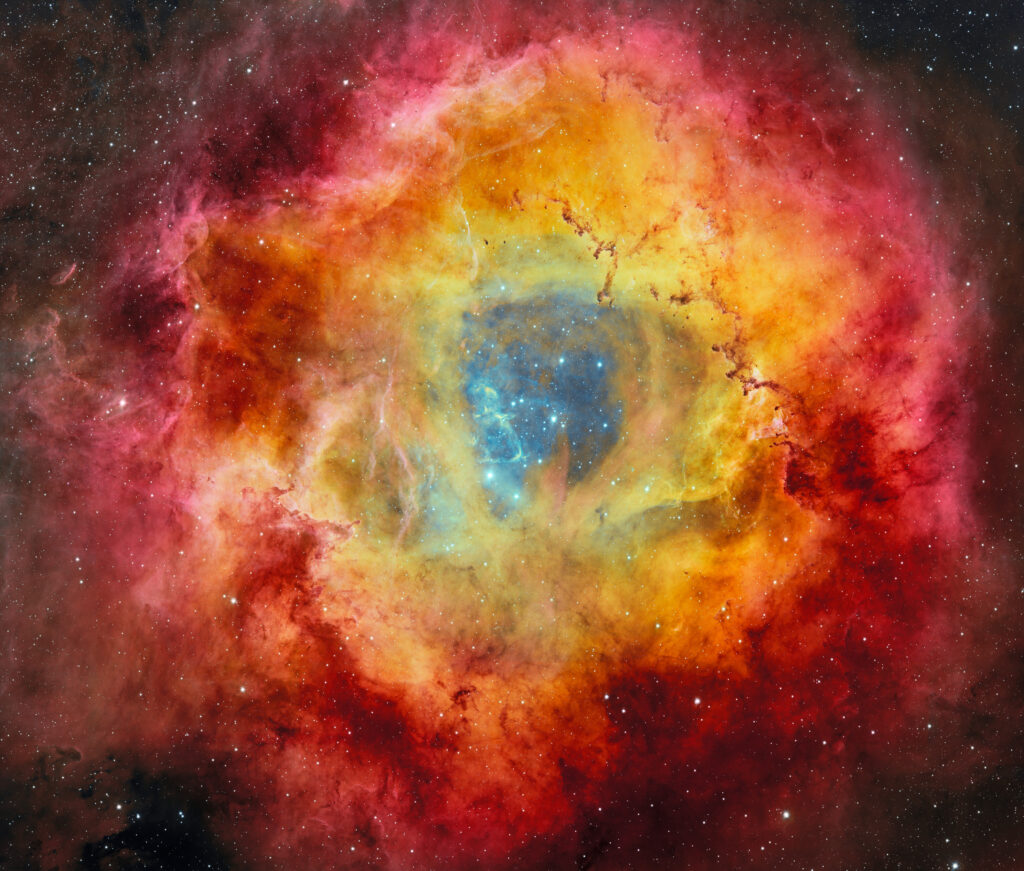The NOIRLab research center has published an image to mark the fifth anniversary of the operation of the Dark Energy Camera (DeCam). It shows the Rosette Nebula resembling a giant fire flower.

The Rosette Nebula is located about 5,000 light-years away from Earth toward the constellation Monoceros. It is a huge cloud of ionized hydrogen stretching 130 light-years across. If we could see the Rosette Nebula in the sky with the naked eye, it would be 2.5 times the diameter of the Full Moon.
If you look at the DeCam image, you can see that there is no gas in the center of this giant “flower”. This is due to the massive stars of the NGC 2244 cluster, which formed about 2 million years ago. Its powerful stellar winds created a gap in the heart of the nebula.
The massive stars of NGC 2244 also emit ultraviolet radiation, which ionizes the surrounding hydrogen and illuminates the nebula with many bright colors. The red color corresponds to H-alpha radiation due to high-energy hydrogen atoms. Along the walls of the central cavity, closer to the massive central stars, the radiation is energetic enough to ionize heavier atoms, such as oxygen, which glows with golden and yellow hues. Finally, irregular threads of dark pink glowing from ionized silicon stretch along the edges of the flower petals.
You can also pay attention to a number of dark clouds located around the core of the nebula, which are called “elephant trunks” because of their appearance. These structures are not transparent because they contain dust, and are the boundary between the hot shell of ionized hydrogen and the surrounding environment of cooler hydrogen. As the shell expands outward, it encounters cold and lumpy gas that resists its pressure. This results in long and elongated trunks that point like fingers toward the central cluster.
Less visible but no less interesting are the dark globules. Sometimes round, sometimes drop-shaped, these formations are composed of dust and are only a few times more massive than Jupiter. Hundreds of globules dot the entire Rosette Nebula. They may have brown dwarfs and planets inside them.
Like all flowers, the Rosette Nebula will not exist forever, as the same stars it spawned will also lead to its death. In about 10 million years, radiation from the hot young stars of the NGC 2244 cluster will dissipate the nebula, and it will cease to exist.
According to NOIRLab


